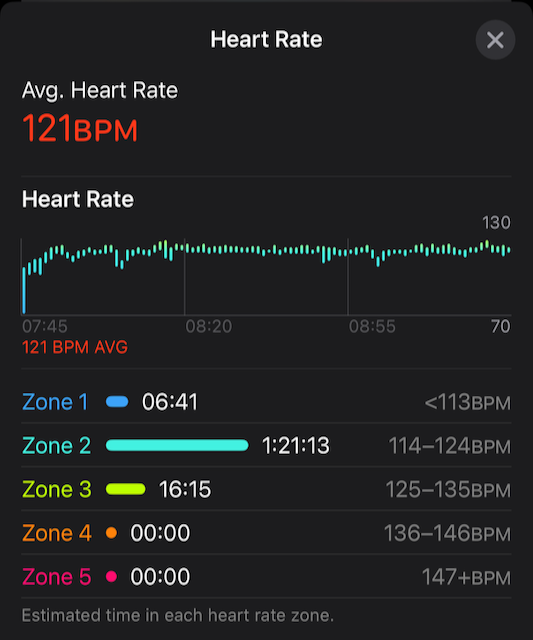Zone 2 Running
I have always run too hard in my training runs, so I'm experimenting with Zone 2 running to force myself to slow down.
I run too fast during my training runs. Now that I’m an old runner, my body no longer tolerates the punishment. After too many hard runs, I begin to experience nagging pains in my knees, ankles, or tendons, and my recovery time increases. As you can see if you look at my running summaries, I too often have to take a break for a couple of months to let an injury heal.
Thirty-some years ago when I trained for marathons, I used Jeff Galloway’s run-walk plan for my long runs. Galloway’s plan includes walking at regular intervals during the long run. This worked well for helping me finish twenty-mile or longer training runs. Ten years ago on my long runs, I would run five minutes and walk one minute. The walking helped me slow down, and I could go much farther than if I tried to complete the distance without taking walking breaks.
Zone 2 runs are very trendy right now. (See, for example, Zone 2 Training, Explained: How To Unlock Endurance And Speed.) The idea is to monitor your heart rate and keep it in Zone 2, using a formula for determining your individual Zone 2 heart rate range. Coaches on YouTube promise that if you run in Zone 2 for many months, you will gradually get faster as you build your base, but you will not stress your body as much as from running ordinary training runs, reducing the rate of injury.
The Zone 2 formula is not precise and should be adapted for each individual. My Apple Watch says my Zone 2 range is 114-124 beats per minute, based on my age and my running data for three years. This matches well with other Zone 2 formulas I looked at, such as How to Calculate Heart Rate Zones.
My typical runs end up being a mix of Zone 2 and Zone 3. As I extend my long runs, my proportion of Zone 3 running increases because my heart rate goes up as I get tired and become dehydrated in the later miles. In the past two years, I have been unable to increase my long run to half marathon length, either because I injure myself or because I hit the wall.
I taught myself how to set the preferences for the Outdoor Run Workout on my Apple Watch to have it monitor my heart rate and warn me when my heart rate is above or below my Zone 2 limits. (See Use Your Apple Watch for Zone 2 Training! for directions on how to set this up.)
In the past week, I completed four Zone 2 runs for a total of 29 miles. My average pace has slowed by 60-90 seconds per mile. After these 29 miles, I find I’m developing a good feel for when I’m running too hard and I’m about to receive an alert that my heart rate is too high. To keep my heart rate within Zone 2, I have to slow down for the later miles.
Here’s my heart rate for my long run on Saturday, May 3, 2025:
 Heart Rate for Long Run on May 3, 2025
Heart Rate for Long Run on May 3, 2025
During that run, I was usually on the upper edge of Zone 2, increasing into low Zone 3 (125-127 bpm) on hills. My heart rate was remarkably even for the 100 minutes of that run because my watch would warn me that my heart rate was above the Zone 2 range, and I would slow down to compensate. One result was that my mile splits got longer by 45 seconds for the final miles.
But for me, the greatest benefit of Zone 2 running so far is that my legs haven’t been very tired after the runs. Running at this slower pace is putting noticeably less stress on my body.